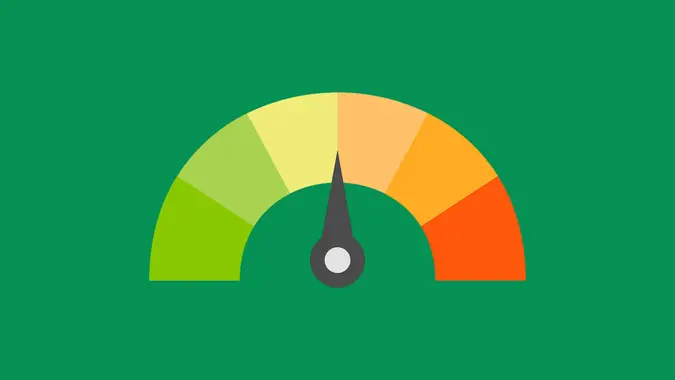Here’s the Beginner’s Credit Mistake That Could Haunt You for Years

Commitment to Our Readers
GOBankingRates' editorial team is committed to bringing you unbiased reviews and information. We use data-driven methodologies to evaluate financial products and services - our reviews and ratings are not influenced by advertisers. You can read more about our editorial guidelines and our products and services review methodology.

20 Years
Helping You Live Richer

Reviewed
by Experts

Trusted by
Millions of Readers
Many Americans start their credit journey with no credit history, which can feel intimidating and confusing. About 7 million U.S. adults — roughly 2.7% of the population — were considered “credit invisible” in 2020, according to a Consumer Financial Protection Bureau technical update released in June 2025 — meaning they don’t have enough history to generate a credit score. This can keep them from making necessary financial moves, from taking out loans to buying a car.
Whether you’re a young adult or simply hesitant to use credit because of its potential downsides, it’s important to build a credit history for many financial reasons. Kiersten Saunders, co-creator of the award-winning blog and podcast rich & REGULAR and author of the bestselling book “Cashing Out: Win The Wealth Game By Walking Away,” sat down with GOBankingRates as part of our Top 100 Money Experts series to offer clear steps to avoid the mistake that could hurt your credit for years.
How To Start Building Credit When You Have No History
If you’re starting from scratch, you have a few simple tools to establish credit. As Saunders said, “Start where the system will let you.” These tools include:
- Secured credit card: Start with a refundable deposit on a secured credit card — say $200 or $500 — that becomes your credit limit. Use it for small purchases and pay the balance in full each month to build a history of responsible payments.
- Credit-builder loan: A bank or credit union can help you lock in a small loan amount in a savings account while you make fixed monthly payments. Once it’s paid off, you get the money back and the repayment history shows up on your credit report.
- Authorized user status: Ask a trusted family member, partner or friend to add you as an authorized user on an existing card so you can benefit from their positive payment history without taking on the primary responsibility.
“What matters more than which tool you choose is how you use it,” Saunders said. “Credit is ultimately a measure of how you handle responsibility.”
The Mistake To Avoid: Thinking Approval = Progress
Another big mistake that’s easy to make is “mistaking approval for progress,” Saunders said.
“That first card can feel like proof that you’ve arrived, but it’s really just the beginning of building a reputation with lenders — and with yourself.”
In other words, approval shows a lender is willing to take a chance on you now. It does not mean you’ve built the track record lenders use to make bigger decisions.
Building Credit the Right Way: Slow and Steady Wins
While it’s important to build credit, Saunders says another trap is applying for too much credit too fast. “When you’re starting from zero, it’s easy to feel like you need to do more to catch up, but every new application leaves a mark,” she explained.
Every time you apply for a new account, whether approved or not, it shows up on your credit report. What actually builds credit is slower than most people expect: consistent, responsible use of one or a few accounts over time.
“You can start to see real progress in six to twelve months, but it depends on how consistent you are,” Saunders said.
Smart Hacks To Build Credit Faster
If you want to build credit faster, Saunders recommends focusing on what lenders actually look for: on-time payments, low balances and active accounts.
- Make every payment count: If your rent or utilities can be reported to the credit bureaus, add them. Even if that’s not automatic, some services can report recurring payments.
- Use small recurring charges: Put low-dollar subscriptions — like Netflix or gas — on your card and pay it off in full each month to create a steady activity pattern.
- Automate payments: Set up autopay or calendar reminders so you never miss a due date.
“You don’t need a lot of activity; you just need to show you can keep up with what you already have,” Saunders said.
Build a Credit History That Lasts
It’s also important to be smart with your credit use. Keep your credit utilization — the amount of your available credit that you’re using — between 10% and 30% for the best results.
Building credit is a long game, not a quick win. The earlier you start, the better, but even if you find yourself further in life than you hoped without a credit history, it’s never too late to begin.
Focus on patience, consistency and good credit hygiene, and you’ll build a solid foundation today that saves years of financial stress later.
This article is part of GOBankingRates’ Top 100 Money Experts series, where we spotlight expert answers to the biggest financial questions Americans are asking. Have a question of your own? Share it on our hub — and you’ll be entered for a chance to win $500.
 Written by
Written by  Edited by
Edited by  Money Expert
Money Expert 







































































































